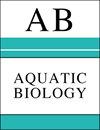潜水员操作的手动吸泵取样器:在岩石基质上取样底栖生物的可靠方法
IF 0.8
4区 生物学
Q3 MARINE & FRESHWATER BIOLOGY
引用次数: 3
摘要
尽管已经开发了许多用于水肺潜水员操作采样的方法,但很少有方法适合采样复杂的物理基质。像地下水泉这样的地方,有时在不同深度的垂直和水平岩石基底上有狭窄的断面。在这里,我们开发了一个水肺潜水员操作的吸入泵采样系统,设计用于在形态复杂的基质上取样底栖生物物质。采样器的设计是简单的使用在一个已经沉重的齿轮操作。该装置连接在潜水员上,使其成为适合在垂直基材上工作的工具,并且可以由1人操作。我们比较了大型底栖动物取样率和吸力泵取样器的可用性与经过修改以供潜水时使用的Surber取样器。吸泵取样器取样的大型底栖动物总体密度和物种丰富度高于改良的Surber取样器取样的样品。吸入泵采样器的采样效率更高,因为采样容器在水下很容易更换,而改进后的Surber需要运输到水面并固定样品才能进行下一次采样。根据采样过程的目的,可以对吸入泵取样器进行各种修改,并且可以用便宜且容易获得的材料构建。这里介绍的吸入泵采样器进一步使海洋和淡水生态学领域的研究人员能够准确地对底栖生物栖息地进行采样,包括以前物理复杂性可能阻止采样的栖息地。本文章由计算机程序翻译,如有差异,请以英文原文为准。
Diver-operated manual suction pump sampler: a reliable method for sampling benthos on rock substrates
Although numerous methods have been developed for SCUBA diver-operated sampling, few are suitable for sampling complex physical substrates. Sites such as groundwater springs sometimes have narrow sections along with uneven vertical and horizontal rock substrates at various depths. Here we developed a SCUBA diver-operated suction pump sampling system, designed for the sampling of benthic material on morphologically complex substrates. The sampler was designed to be simple to use in an already gear-heavy operation. The device is attached to the diver, making it a suitable tool for work on vertical substrates, and can be operated by 1 person. We compared the macrozoobenthic sampling yield and usability of the suction pump sampler to a Surber sampler that was modified for use while diving. Samples taken with the suction pump sampler had an overall greater macrozoobenthic density and species richness than samples taken with the modified Surber sampler. Sampling was more efficient with the suction pump sampler, as sampling containers were easily replaced underwater, whereas the modified Surber needed to be transported to the surface and its sample fixed before the next sample could be taken. Various modifications of the suction pump sampler are possible, depending on the objective of the sampling process, and it can be constructed with inexpensive and readily available materials. The suction pump sampler presented here further allows researchers in the field of marine and freshwater ecology to accurately sample the benthic habitat, including habitats where physical complexity may previously have prevented sampling.
求助全文
通过发布文献求助,成功后即可免费获取论文全文。
去求助
来源期刊

Aquatic Biology
生物-海洋与淡水生物学
CiteScore
2.70
自引率
0.00%
发文量
7
审稿时长
3 months
期刊介绍:
AB publishes rigorously refereed and carefully selected Feature Articles, Research Articles, Reviews and Notes, as well as Comments/Reply Comments (for details see MEPS 228:1), Theme Sections, Opinion Pieces (previously called ''As I See It'') (for details consult the Guidelines for Authors) concerned with the biology, physiology, biochemistry and genetics (including the ’omics‘) of all aquatic organisms under laboratory and field conditions, and at all levels of organisation and investigation. Areas covered include:
-Biological aspects of biota: Evolution and speciation; life histories; biodiversity, biogeography and phylogeography; population genetics; biological connectedness between marine and freshwater biota; paleobiology of aquatic environments; invasive species.
-Biochemical and physiological aspects of aquatic life; synthesis and conversion of organic matter (mechanisms of auto- and heterotrophy, digestion, respiration, nutrition); thermo-, ion, osmo- and volume-regulation; stress and stress resistance; metabolism and energy budgets; non-genetic and genetic adaptation.
-Species interactions: Environment–organism and organism–organism interrelationships; predation: defenses (physical and chemical); symbioses.
-Molecular biology of aquatic life.
-Behavior: Orientation in space and time; migrations; feeding and reproductive behavior; agonistic behavior.
-Toxicology and water-quality effects on organisms; anthropogenic impacts on aquatic biota (e.g. pollution, fisheries); stream regulation and restoration.
-Theoretical biology: mathematical modelling of biological processes and species interactions.
-Methodology and equipment employed in aquatic biological research; underwater exploration and experimentation.
-Exploitation of aquatic biota: Fisheries; cultivation of aquatic organisms: use, management, protection and conservation of living aquatic resources.
-Reproduction and development in marine, brackish and freshwater organisms
 求助内容:
求助内容: 应助结果提醒方式:
应助结果提醒方式:


